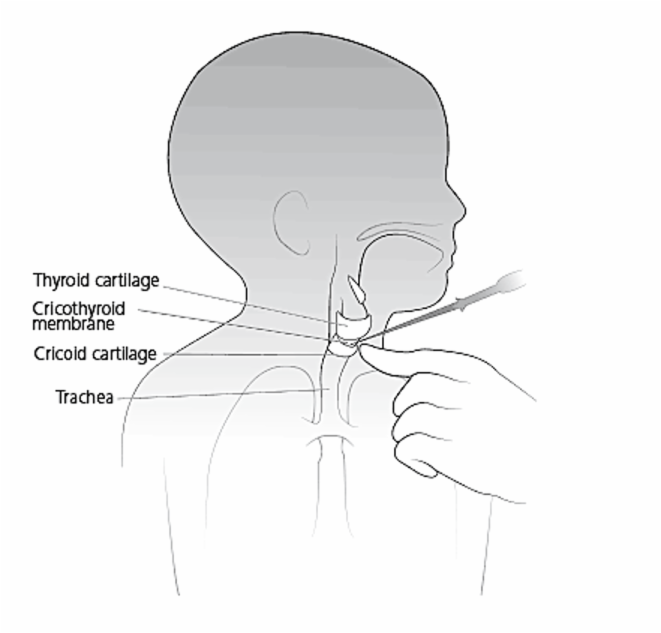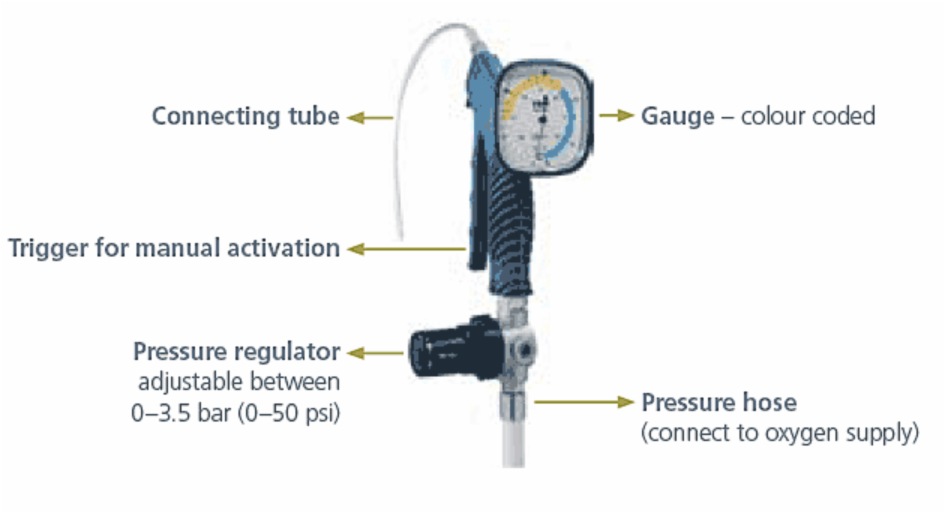Indications: ‘cannot ventilate, cannot intubate’
Equipment needed:
- 18g cannula, 10 ml syringe, 5 ml saline (to confirm the location of trachea, by aspirating air)
- Manujet (with pressure control proportional to age)
Technique:
- Attach a 10 ml syringe to the cannula. Insert the cannula at an angle of 45 degrees towards the feet through the cricothyroid membrane in the midline.
- Confirm the location of the cannula in the trachea by aspirating air into syringe. Advance the cannula into the trachea and remove the needle.
- Secure the cannula in place and connect the manujet system through the connecting tube that comes with the manujet.
- The other end of the manujet system is connected to the oxygen outlet on the wall or oxygen cylinder.
- Set the pressure limit on the manujet according to the age group, before starting to ventilate. Press the handle on the manujet for about a second. Check the ventilation by seeing the chest rise. Increase the pressure slowly (to a maximum of 40) until satisfactory chest rise or an improvement in oxygenation is achieved.
- • It is important to visualise the chest fall as well during the 3–4 second pause between manujet inflations. This is achieved by maintaining a patent airway (supraglottic) or by attaching a three way tap to the tubing connected to the manujet, which is then opened to the atmosphere from the trachea.

Potential complications:
- Failure to identify trachea
- Subcutaneous / mediastinal emphysema
- Bleeding

Surgical cricothyroidotomy
Surgical cricothyroidotomy is usually reserved for children above 12 years of age.
→ Section 6.c.i
Surgical airway